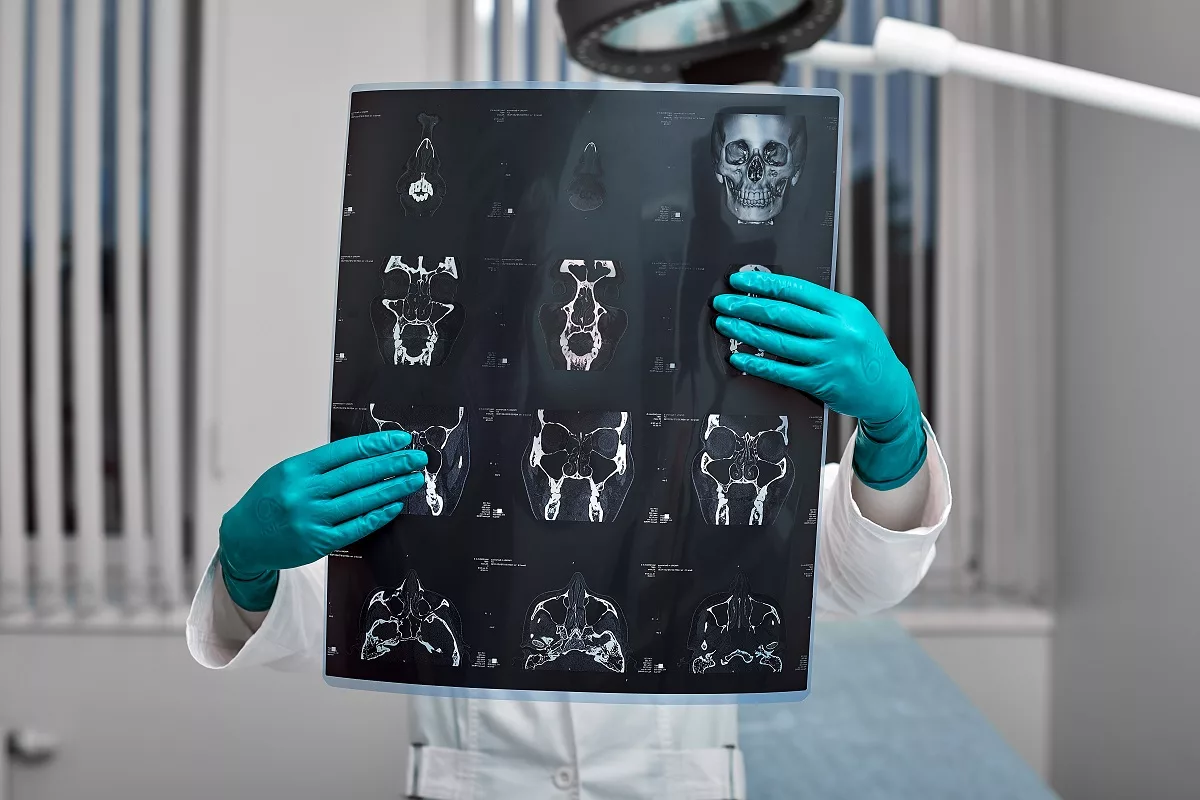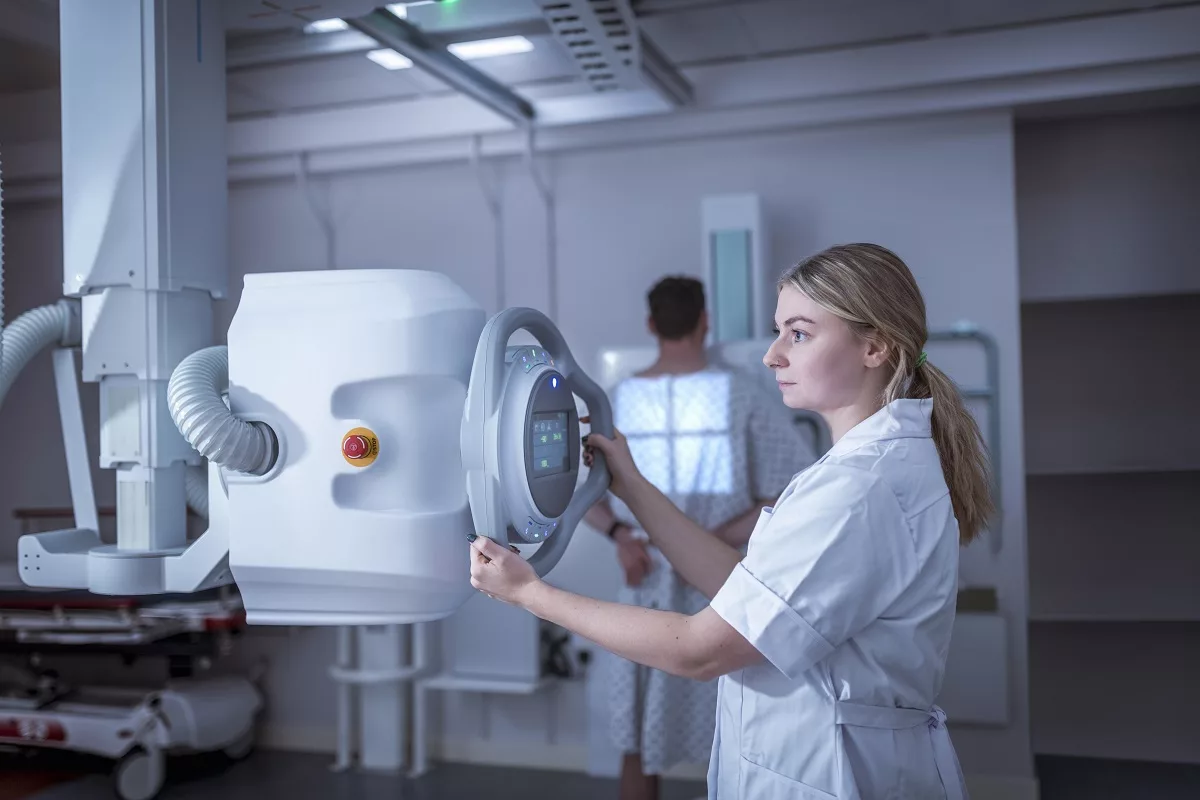A tumor that develops in the Schwann cells is called a schwannoma. These cells are located in the peripheral nervous system or nerve roots. However, this tumor is usually benign and slow-growing. One of the most common types of schwannoma is the vestibular schwannoma, which affects the nerves in the inner ear. In rare cases, people may develop a malignant schwannoma.
In general, these cells assist nerve impulses and wrap around the peripheral nerves to protect them. The peripheral nervous system includes the brain, spinal cord, and nerves that carry signals from the whole body.
People may develop a cancerous schwannoma. In most cases, it affects the sciatic nerve of the leg, the brachial plexus of the arm, or a group of nerves in the lower back known as the sacral plexus. In some cases, schwannomas are called neurilemmomas or neuromas. Moreover, approximately 90% of all diagnosed schwannomas are benign (noncancerous).
In general, schwannomas occur rarely. They affect about 200,000 people each year in the U.S. Furthermore, roughly 60% of them are vestibular schwannomas (also called acoustic neuromas).
Symptoms
People may have a schwannoma for years but do not know about it because they do not experience any symptoms. Usually, schwannomas are noncancerous and slow-growing tumors. While it may develop in any part of the body, it mostly develops in the inner ear. The symptoms often range from mild to severe. Check below some examples:
- A lump that may feel tender, especially when you put pressure on it
- Numbness
- Burning, aching, or sharp pain
- Paresthesia (pins-and-needles feeling)
- Muscle weakness
Those who develop a vestibular schwannoma may also experience hearing and balance problems and tinnitus (ringing in the ears). If the tumor affects the facial nerve, you may notice problems with swallowing, eye movement, taste sensations, and facial paralysis (rarely). When a schwannoma develops in the sciatic nerve, it may cause symptoms similar to disk herniation along with low back pain.
Causes
Experts do not fully understand why schwannomas appear. However, about 90% of all diagnosed schwannomas occur randomly (sporadically). According to some research, the NF2 gene on chromosome 22 plays a vital role in the development of this tumor.
Risk Factors
While it is not possible to determine what exactly causes a schwannoma, doctors have identified some factors that could elevate your risk of developing it. Check below some examples:
- Certain genetic disorders – These include neurofibromatosis 2 (NF2), Carney complex, and schwannomatosis.
- Age – Most schwannomas are diagnosed in people between the ages of 50 and 60.
- Other potential factors – Some studies suggest that the following lifestyle choices and conditions may also contribute to the development of a schwannoma. For example, chickenpox, hay fever, misuse of alcoholic drinks, and others.
In addition, people with genetic disorders usually develop more than one schwannoma.
What Are The Possible Complications of Schwannoma?
Usually, people experience complications when the schwannoma is malignant or grows large enough and puts pressure on nearby structures and organs. Examples include:
- Hearing loss
- Problems with balance
- Nerve damage that may lead to loss of muscle function
- Facial nerve problems (including facial paralysis or difficulty swallowing)
- Hydrocephalus
This article does not contain a full list of schwannoma complications. Moreover, you can consult with your doctor about ways to reduce the risk or prevent complications of this condition.
How to Prevent Schwannoma?
It is not possible to prevent this type of tumor because roughly 90% of them occur randomly. However, 10% of them are often associated with some genetic disorders that cause these tumors to develop. For instance, if you have a family history of neurofibromatosis (NF2), schwannomatosis, or Carney complex, the risk of developing a schwannoma significantly increases. Doctors often recommend genetic counseling to determine whether you have a genetic condition.
Diagnosis
In some cases, a person may have a schwannoma for years before the diagnosis. It often occurs because the tumor grows slowly and does not cause symptoms. In other cases, a schwannoma can be identified during an imaging test done to check for other health problems. Check below some tests used to confirm a schwannoma:
- MRI (magnetic resonance imaging) – This test uses a magnetic field and radio waves to produce detailed images of different structures and organs in the body. In such cases, it is used to detect schwannomas.
- CT (computed tomography) scans – This is another imaging test that produces cross-sectional images of structures inside the body.
- Ultrasound – This test uses sound waves to make real-time pictures or videos of internal organs and other tissues. Doctors usually perform this test to diagnose a schwannoma under the skin.
- Biopsy – Sometimes, doctors may perform a biopsy that involves the removal of a small part of the tumor and testing it under a microscope for abnormal cells.
Treatment
The treatment is often different among people with schwannoma because it depends on several factors. For example, the size and location of the tumor, age, existing health problems, and preferences. Check below some treatments often recommended for people with schwannomas:
- No treatment – If the tumor is not cancerous and it does not cause symptoms, doctors may recommend monitoring it instead of treatment.
- Surgery – If you develop a tumor that grows fast and causes symptoms, physicians may recommend surgery to remove it. During this procedure, surgeons may also remove a small amount of healthy tissue along with the tumor. In most cases, doctors remove the tumor without causing damage to the nerves, but in people with vestibular schwannomas, it often leads to hearing loss.
- Radiation therapy – This therapy uses powerful energy to destroy the tumor. This energy comes from different sources, including X-rays, protons, and others.
If you have a cancerous tumor, physicians may also prescribe immunotherapy and chemotherapy. These treatments are often recommended for people with an advanced stage of cancer or when surgery is not an option.
Frequently Asked Questions
What is a vestibular schwannoma?
In such cases, the tumor (schwannoma) grows from the balance and hearing nerves. It is also known as an acoustic neuroma, and in most cases, it is not cancerous and grows slowly. Over time, this tumor may grow large enough to affect these nerves. Therefore, hearing loss, ringing in the ears, and dizziness may occur.
Is there a cure for schwannoma?
There is no single procedure to cure this condition, but a complete surgical removal of the tumor may cure benign schwannomas. For more details, discuss it with your doctor.
What is the survival rate for schwannomas?
In general, the survival rate for people with benign schwannomas is usually not affected. However, if you develop a malignant schwannoma, the 10-year survival rate is roughly 85%. Ask your healthcare provider if you have any other questions.




